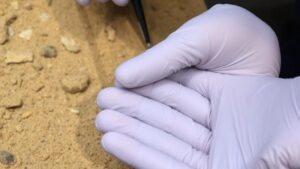Logical Research Strategies for Validating Historical Treasure Maps
Logical Research Strategies for Validating Historical Treasure Maps
Treasure hunting has captivated the hearts and imaginations of adventurers and historians alike for centuries. The allure of discovering hidden riches buried in the earth sparks countless expeditions, yet the first step in any successful treasure hunt lies in the validation of historical treasure maps. This article delves into logical research strategies that can effectively determine the authenticity and potential value of treasure maps.
Understanding Historical Context
The first strategy in validating treasure maps involves a comprehensive assessment of the historical context in which the map was created. Historical maps often reflect the political, economic, and social conditions of their time. To properly evaluate a treasure map, researchers should consider the following:
- Origin of the Map: Establishing who created the map and their motivations is crucial. For example, maps produced during periods of colonial expansion often reveal locations of resources that were desirable to colonial powers.
- Technological Advancements: Understanding the cartographic techniques and tools available during the time the map was created can provide insights into its accuracy. For example, maps from the 17th century may lack the precision seen in modern mapping techniques.
Documentary Research
Once the historical context is established, researchers should engage in extensive documentary research. This involves scouring archives, libraries, and online databases for contemporaneous records that may corroborate the claims made by the treasure map. Key types of documents to consult include:
- Military Records: Often, treasure maps are linked to military operations or secret caches of valuables. Archival military documents can unveil historical clues that validate the map.
- Letters and Diaries: Personal accounts from individuals living during the time period can provide anecdotal evidence supporting the claims of the treasure map.
For example, the search for the lost treasure of the Flor de la Mar ship, which sank in 1511, is supported by various letters describing its cargo and movements leading up to the disaster. Scholars have pieced together data from these sources to validate the existence and value of the treasure described in contemporary maps.
Geographic Analysis
Geographic Information Systems (GIS) have revolutionized the field of historical research by enabling researchers to analyze and visualize geographical data. When validating a treasure map, researchers should employ GIS tools to:
- Overlay Historical Maps: By superimposing the treasure map over modern maps, researchers can identify changes in geography that may affect potential treasure locations–such as land erosion or urban development.
- Conduct Spatial Analysis: GIS allows for the assessment of spatial relationships, such as proximity to rivers or trade routes, which can influence the likelihood of treasure being present at a given site.
In a case study of Captain Kidds buried treasure, GIS techniques have mapped potential sites based on consistent historical shipping routes and land claims documented in various records.
Archaeological Corroboration
Archaeological field techniques are essential in substantiating the claims of treasure maps. Prior to any excavation, researchers should look for:
- Site Surveys: Initial surveys can identify features on the ground that correspond to markings on the map. For example, the discovery of a colonial fort could reinforce hypotheses about a nearby treasure site in the area.
- Excavation Techniques: Stratigraphic excavation can help in retrieving artifacts from various time periods, potentially confirming the historical context of the treasure claim.
A notable archaeological examination occurred in the search for the treasure of the Atocha, where divers utilized both documentary research and archaeological methods to locate and recover sunken treasures successfully.
Community Engagement and Local Knowledge
Engaging with local communities can yield invaluable insights in the quest for validating historical treasure maps. Local historians, artisans, and long-time residents often possess anecdotal knowledge or undocumented lore that can inform research efforts. Researchers should consider:
- Traditional Knowledge: Local oral histories may feature references to known treasure sites or historical figures tied to the treasure map.
- Collaboration with Local Institutions: Partnering with local museums or historical societies can provide access to unique resources and expert insights.
The collaboration between researchers and the community played a vital role in the validation of the treasure map leading to the discovery of the Civil War-era Gold of the Confederacy, where local narratives guided excavations that eventually uncovered valuable artifacts.
Conclusion
Validating historical treasure maps requires a multi-faceted approach that combines historical context, documentary research, geographical analysis, archaeological evidence, and community involvement. By employing these logical research strategies, treasure hunters and researchers can significantly increase their chances of uncovering hidden gems of history while preserving the rich narratives tied to these artifacts. The delicate interplay of various disciplines ensures that the quest for treasure remains not only an adventure but a pursuit rooted in validated academic inquiry.
As you embark on your own treasure hunting endeavors, remember to maintain an objective and systematic approach while exploring the historical significance behind the maps that spark your interest.



